NIL
Paul Mainieri on South Carolina struggles before LSU series | LSU
Paul Mainieri has gone through this before. He just thought that he wouldn’t have to do it again. Mainieri believed the South Carolina team he inherited had some talent, enough so that the Gamecocks could compete immediately in the toughest conference in college baseball. He didn’t think his first year at his new school would be as […]
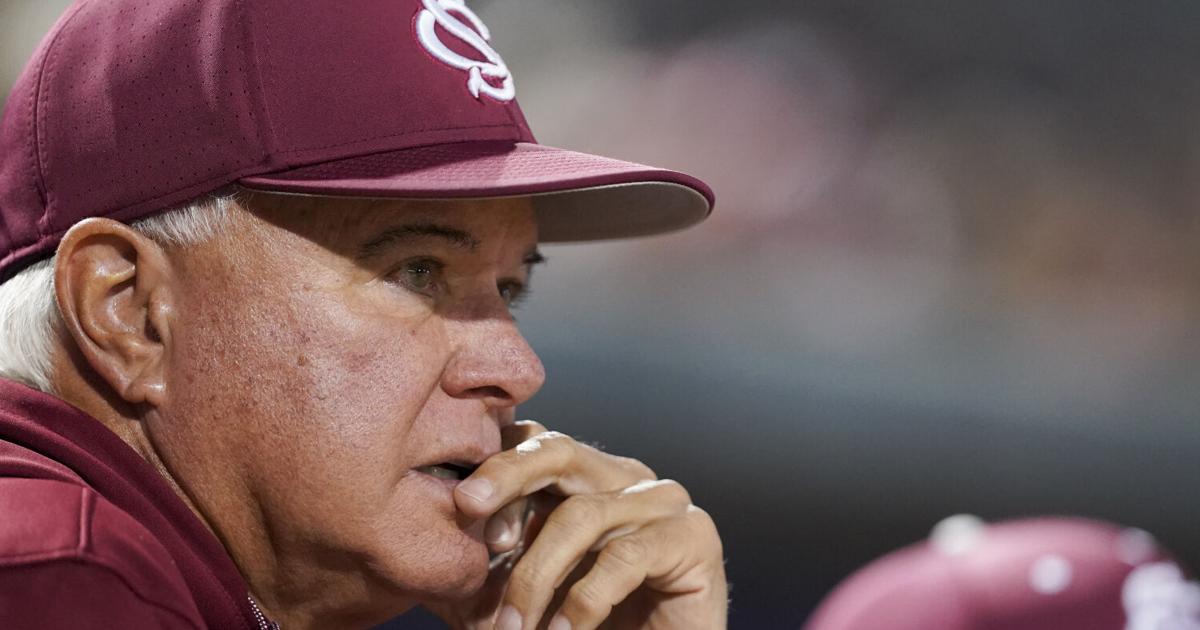
Paul Mainieri has gone through this before. He just thought that he wouldn’t have to do it again.
Mainieri believed the South Carolina team he inherited had some talent, enough so that the Gamecocks could compete immediately in the toughest conference in college baseball.
He didn’t think his first year at his new school would be as difficult as it was in 2007, his first season at LSU.
“In the fall, I thought there were a few pieces,” Mainieri told The Advocate.
But after getting swept at Clemson during nonconference play, Mainieri recognized shortcomings with his new team. They proved to be holes he couldn’t fill during Southeastern Conference play.
“The conference is just so tough. You know, it’s unforgiving,” Mainieri said. “And our schedule in particular was really difficult this year, and it exposed our limitations, where we have them.”
South Carolina holds a 5-22 record in the SEC. Mainieri’s team is 27-26 overall and has won only one series in conference play, taking down Ole Miss twice last month.
The Gamecocks are nowhere near the postseason picture heading into this weekend’s series against LSU beginning at 6 p.m. Thursday (SEC Network) in Columbia, South Carolina.
“I forgot how hard it is to win college baseball games, I guess,” Mainieri said.
Mainieri’s difficulties this season in some ways mirror what happened in 2007, when he left Notre Dame for Baton Rouge to replace Smoke Laval.
The Tigers were 29-26-1 that season and went just 12-17-1 in SEC play. Mainieri knew he’d have to take his lumps, but his confidence never wavered when it came to whether he could turn the program around.
“I told the team that, ‘This will be the last year that LSU was ever taken lightly again,’ ” Mainieri said. “And it’s a pretty bold comment, based upon what had happened in the first year. But I don’t think LSU has been taken lightly again since then.”
The Tigers went to Omaha the next season before winning their sixth national championship in 2009. But before they could find that level of success, they had to build the foundation in 2007.
That meant turning to freshmen such as Jared Mitchell, Sean Ochinko, Ryan Schimpf and Blake Dean. Dean led the Tigers in batting average and started every game.
“If we’re not going to win at a high level, at least I’m going to get these good freshmen a lot of experience and playing time, so it’ll pay off down the road,” Mainieri said. “And it certainly did with that group of guys at LSU.”
Mainieri has deployed a similar strategy at South Carolina, hoping that freshmen such as KJ Scobey and Beau Hollins can help turn around a program that won back-to-back national championships in 2010-11.
“They’ve had up-and-down moments, just like the kids did way back in the 2007 season,” Mainieri said. “But they’ve also shown what they’re capable of doing at times.”
But a lot has changed since Mainieri retired at LSU after the 2021 season, and even more about the game has evolved since 2007.
There’s NIL. There’s the transfer portal. There’s more pitchers than ever throwing 95-plus miles per hour, and more hitters than ever strong enough to consistently hit balls out of the park.
Mainieri knew these were hurdles he’d have to tackle when he decided to return to the dugout last summer, but the sheer impact of it all caught him a bit off-guard.
“The strength of the players, the velocities of the pitchers, that has been a big change since I retired four years ago,” Mainieri said. “I was telling someone the other day, we’re beating Ole Miss 5-1 in the sixth inning or something, and they bring a guy in out of the pen throwing 100 miles an hour.
“I remember when Jaden Hill touched 96 mph in a fall game, and how everybody oohed and ahhed. I remember Alex Lange’s first pitch of his career (was 95 mph) … and you could hear the buzz throughout the crowd.”
This brutal reality has, in part, led to South Carolina being third-to-last in the SEC in home runs (27) and second-to-last in ERA (9.27).
“We’ve just struggled on the mound mightily,” Mainieri said. “You just look at our statistics, and it’s easy to see that.”
Acquiring the horses necessary to compete in the SEC is the next step for Mainieri. He said he’s already hard at work on the recruiting trail for next year and beyond.
But recruiting high school players is just a slice of the pie in the modern era of college baseball. Adding immediate impact transfers with the help of sufficient NIL funds is a component of roster building that has become equally crucial in 2025.
“When I first got here last summer, we lost a lot of recruiting battles because other schools were giving a more, shall I say, appealing package to kids,” Mainieri said. “That’s the reality of the world we live in now. The schools that have a lot of money and are willing to give it to the players are getting the best players.
“We were playing Tennessee, for example, and the first baseman (Andrew Fischer) and the No. 1 starting pitcher (Liam Doyle) both played for Ole Miss last year, and both had a lot of success for Ole Miss last year. Why would they change schools from Ole Miss to Tennessee? Because they like the color orange? I mean, let’s be honest.”
Mainieri is still confident he can get South Carolina back to where it was 15 years ago. It’s a feat he already accomplished at LSU.
But he knows it’s not going to be easy.
“We just have to upgrade and get better, like we did after the first year at LSU,” Mainieri said. “And hopefully we will. We’re all working like crazy on recruiting for next year.”
NIL
Amid North Carolina NIL Spending Rumors, Basketball HC Hubert Davis Faces Huge Expectations
A recent report from Inside Carolina set off alarm bells among college basketball fans when it claimed that North Carolina had allocated an astonishing $14 million to its basketball program. Even considering the NCAA’s new reality — full of massive NIL contracts, transfer portal decisions, and the upcoming result of the House vs. NCAA lawsuit […]
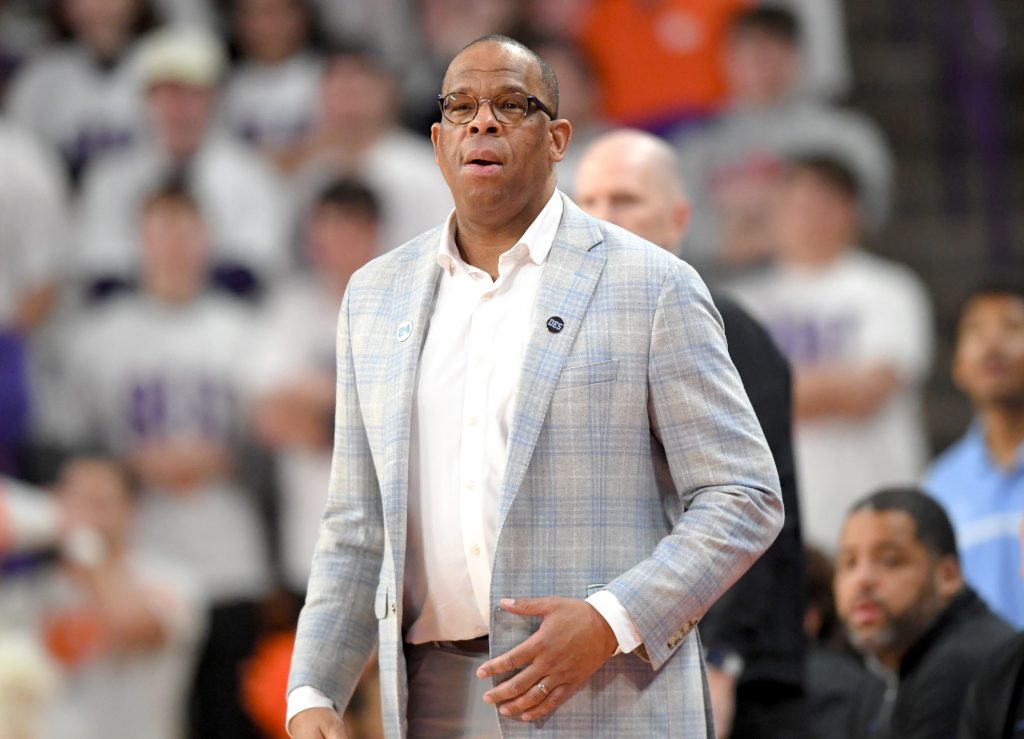
A recent report from Inside Carolina set off alarm bells among college basketball fans when it claimed that North Carolina had allocated an astonishing $14 million to its basketball program.
Even considering the NCAA’s new reality — full of massive NIL contracts, transfer portal decisions, and the upcoming result of the House vs. NCAA lawsuit — this sum far exceeds what many expected.
Basketball Insider Says 2025 is the “Ultimate ‘No Excuse’ Year for Hubert Davis”
In the Inside Carolina reports, writer Greg Barnes explained that multiple sources have confirmed that the North Carolina Tar Heels have spent over $14 million in NIL deals for next basketball season.
College basketball analyst Tim Donnelly was surprised by the report. The host of “The Drive” on 99.9 The Fan, he stated that Davis is at a crucial moment in his leadership of the Tar Heels.
“This is the ultimate ‘no excuse’ year for Hubert Davis,” Donnelly explained. “This is the ultimate no-excuse year for the brain trust that is running UNC basketball right now.”
He continued, “With great money comes great responsibility,” he added. “If you give a coach $14 million to put together a roster and the roster is not stellar at the end of the year, you look at that coach and you go, ‘I don’t know if I’m ready to give you $14 million again.’ Right?”
Donnelly shared his vision for the future of Davis and his team after receiving $14 million.
“If you give a coach $14 million and they come back the next year and say, ‘Hey, I need another 14, $15 million,’ ‘Hey, what’d you spend the last 14 on?’”
“You better have a trophy, you better have something worth, you better have a long run into the NCAA tournament, cuz if not, I’m not giving you more money… You better win with $14 million, is what I’m saying, you better win with $14 million.”
RELATED: Analysts ‘Miffed’, Fans ‘Betrayed’ by Ven-Allen Lubin’s Decision to Transfer from North Carolina to NC State
According to the report, the $14 million sum is nearly triple what UNC Basketball spent last season.
The report also states that the expenditure includes adding six new players, including Montenegrin guard Luka Bogavac, guards Kyan Evans and Jonathan Powell, and center Henri Veesaar.
While massive NIL deals aren’t a new phenomenon in the world of college sports, this investment into Carolina basketball is a big move, considering they are also seemingly going “all in” on Bill Belichick and the football team.
College Sports Network has you covered with the latest news, analysis, insights, and trending stories in college football, men’s college basketball, women’s college basketball, and college baseball!
NIL
No. 1 College Basketball Recruit AJ Dybantsa Receives Massive $4.1 Million NIL Update
No. 1 College Basketball Recruit AJ Dybantsa Receives Massive $4.1 Million NIL Update originally appeared on Athlon Sports. BYU Cougars signee AJ Dybantsa is one to watch for as he enters college basketball next season. As a high school recruit, he was a five-star and rated as the No. 1 player in the class of 2025 […]
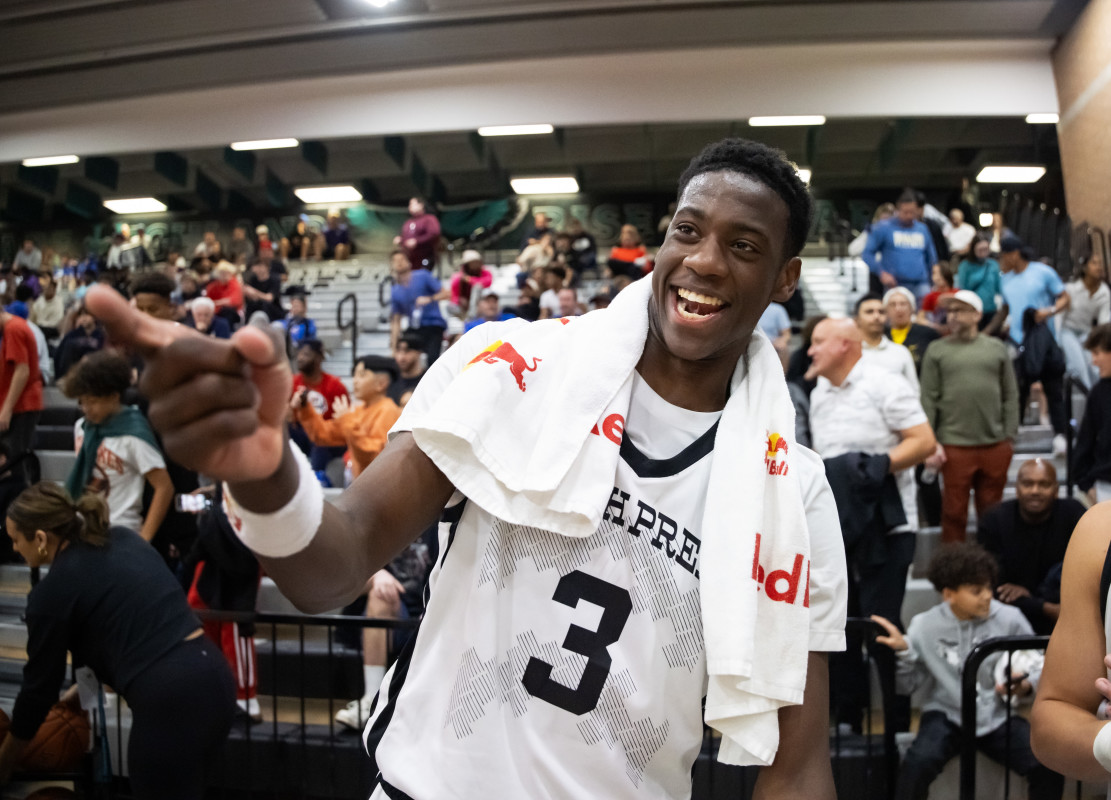
No. 1 College Basketball Recruit AJ Dybantsa Receives Massive $4.1 Million NIL Update originally appeared on Athlon Sports.
BYU Cougars signee AJ Dybantsa is one to watch for as he enters college basketball next season. As a high school recruit, he was a five-star and rated as the No. 1 player in the class of 2025 (On3 Sports).
Advertisement
Back in December, the 6-foot-9 small forward announced his commitment to BYU, choosing the Cougars over three of college basketball’s biggest names: UNC, Kansas and Alabama.
Meanwhile, on Thursday, Dybantsa saw a significant jump in his On3 NIL valuation—up $274k to a total of $4.1 million.
We are living in a new era of college sports, with the leading beneficiaries being the players and the schools with big-market athletic programs. Including his landing of brand deals with Nike and Red Bull, Dybantsa is on a contract with BYU to receive over $7 million this season, according to Adam Zagoria of the New York Times.
The Cougars have emerged as an NIL juggernaut, especially after the hiring of head coach Kevin Young back in April. Young, in fact, was reportedly one of the biggest reasons Dybantsa elected to take his talents to Provo, Utah.
Advertisement
“A lot stood out during my visit,” the Massachusetts native said on ESPN’s “First Take.” “Obviously, coach Kevin Young’s there. My ultimate goal is to get to the NBA, and he coached my favorite player of all time, Kevin Durant.”

BYU Cougars signee AJ Dybantsa (3).Mark J. Rebilas-Imagn Images
When asked who he models his game after, Dybantsa listed household names like Tracy McGrady and Shai Gilgeous-Alexander, the current front-runner for finals MVP (-550, ESPN Bet).
“KD, my favorite player, I take a lot from his game, but I don’t think I play like him,” Dybansta added. “I think he really one of one… I play like a mix of Tracy McGrady and Shai.”
Related: BYU Basketball moves up in ESPN’s early top 25 preseason poll
This story was originally reported by Athlon Sports on Jun 5, 2025, where it first appeared.
NIL
McMullan Named Mississippi State Baseball Associate Head Coach
STARKVILLE – New Mississippi State head baseball coach Brian O’Connor has turned to a trusted and familiar voice as he builds his staff in Starkville. O’Connor announced the hiring of longtime Virginia assistant Kevin McMullan as the Bulldogs’ associate head coach. Widely regarded as one of the premier assistant coaches and recruiters in college […]
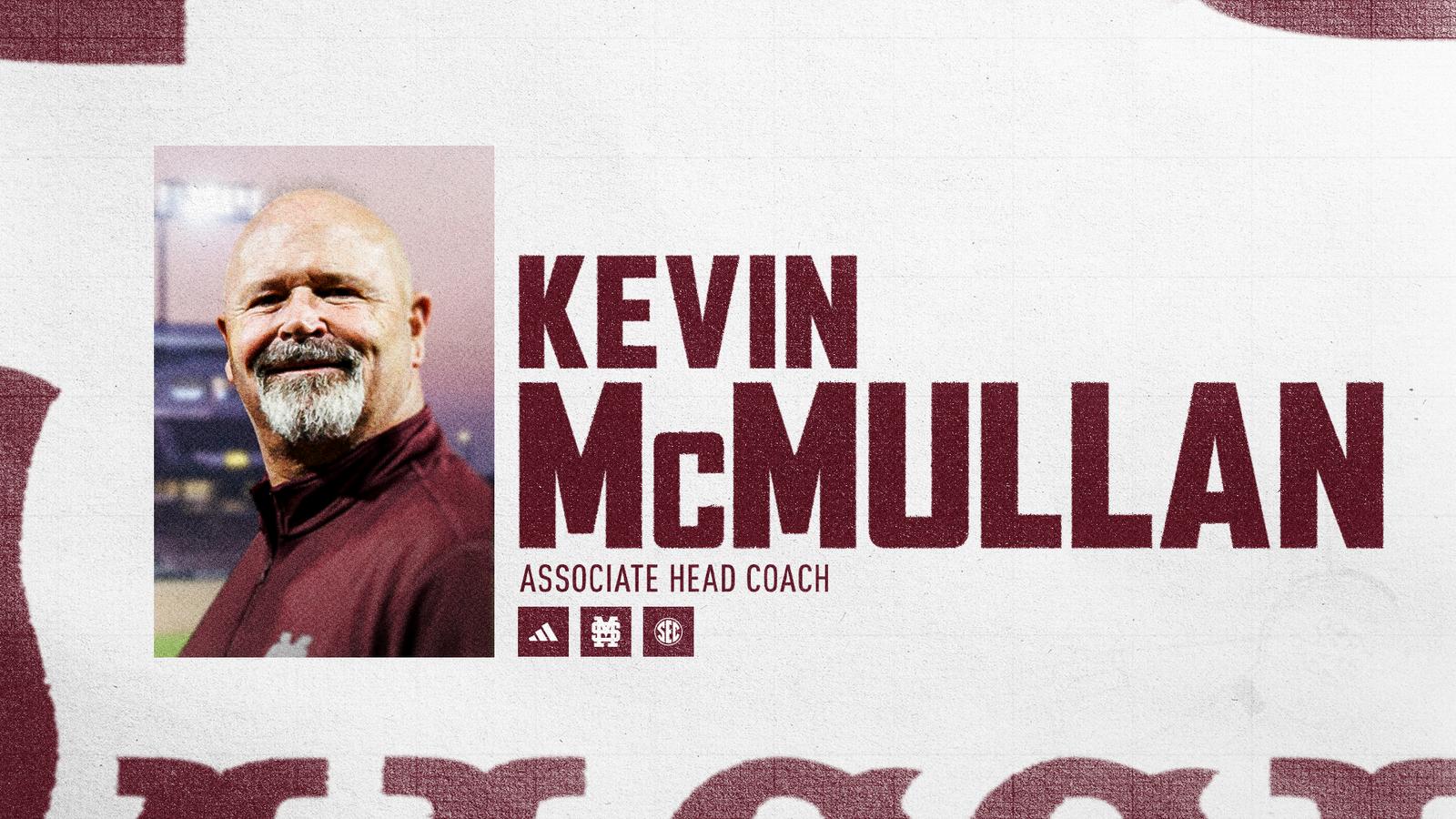
O’Connor announced the hiring of longtime Virginia assistant Kevin McMullan as the Bulldogs’ associate head coach. Widely regarded as one of the premier assistant coaches and recruiters in college baseball, McMullan spent the past 22 seasons at Virginia, including the last 19 as associate head coach under O’Connor.
“Mac has set the standard in player development for as long as I’ve known him,” O’Connor said. “His record helping to make these young men better baseball players and better people is unmatched in college baseball. He is an elite recruiter, develops winners and brings a tireless work ethic to our program. I am very happy that Mac is coming to Mississippi State, and I am excited that it sends a powerful message about the vision we have for this program.”
A two-time National Assistant Coach of the Year (2009, 2024), McMullan helped guide Virginia to seven College World Series appearances and a national championship in 2015. The Cavaliers averaged 42 wins per season during his tenure, reaching the NCAA Tournament 18 times.
He also oversaw one of the most productive offenses in the country over the last two decades, with Virginia leading the ACC in batting average over the past 15 years and hitting above .300 as a team in multiple seasons. In 2024, UVA ranked in the top five nationally in hits, runs, batting average, doubles, slugging percentage and on-base percentage, while belting a school-record 116 home runs.
Defensively, McMullan’s impact was equally strong. Virginia owns the highest fielding percentage in the ACC since his arrival (.973), with 10 of his teams finishing among the nation’s top 40 in that category. The Cavaliers eclipsed the .970 mark in fielding 16 times in his 22 years.
McMullan was voted by his peers as the nation’s top assistant coach in a Baseball America poll of Division I head coaches in 2012, 2017 and 2020.
Over the course of his 27-year college coaching career, more than 100 players under McMullan have signed professional contracts, including 52 Virginia position players drafted and 17 who reached the major leagues. That list includes Ryan Zimmerman (Washington), Mark Reynolds (Milwaukee), Joe Koshansky (Colorado), Brandon Guyer (Tampa Bay), Sean Doolittle (Oakland), David Adams (New York Yankees), Chris Taylor (Seattle), Phil Gosselin (Atlanta), Jarrett Parker (San Francisco), John Hicks (Seattle), Derek Fisher (Houston), Adam Haseley (Philadelphia), Matt Thaiss (Los Angeles Angels), Joe McCarthy (San Francisco), Pavin Smith (Arizona), Ernie Clement (Cleveland), Jake McCarthy (Arizona) and Zack Gelof (Oakland).
Prior to Virginia, McMullan held coaching roles at East Carolina, St. John’s and Indiana University of Pennsylvania. He also managed in the Atlanta Braves organization and played professionally in the Yankees system. A two-sport All-American at IUP, McMullan was an NCAA standout in both baseball and football.
“Mississippi State is a place with championship tradition, passionate fans and the resources to be elite in everything we do,” McMullan said. “Our players, coaches and staff will work every day in a way that respects and honors that tradition and earns the opportunity to compete in front of the best fanbase in college baseball. Hail State!”
McMullan is a 1990 graduate of Indiana University of Pennsylvania. He and his wife, Sandra, have three children: Maggie, Emma and Jack. Their son Jack is currently baseball player at Liberty University. McMullan’s father, John, was an All-American football player at Notre Dame and played in the NFL with the New York Giants, Philadelphia Eagles and New York Titans (now the Jets).
Visit www.HailState.com for the latest news and information on the baseball program. Fans can also follow the program on social media by searching ‘HailStateBB’ on X, Facebook and Instagram.
NIL
Louisville NIL collective 502Circle to transition into marketing agency ahead of new era
502Circle will use relationships with sports agencies like CAA, Klutch Sports Group and Excel Sports Management to continue assisting Louisville coaches with roster construction.If the House settlement goes through, the NIL market will be more heavily monitored by a clearinghouse. All deals exceeding $600 will have to be reported to and pass through the clearinghouse.Since […]


 502Circle will use relationships with sports agencies like CAA, Klutch Sports Group and Excel Sports Management to continue assisting Louisville coaches with roster construction.If the House settlement goes through, the NIL market will be more heavily monitored by a clearinghouse. All deals exceeding $600 will have to be reported to and pass through the clearinghouse.Since 502Circle became the official collective of Louisville Athletics in 2023, five U of L sports teams have rose to, returned to or maintained national relevance. “We freaking crushed it.”A previous version of this story incorrectly detailed the operating structure for 502Circle beginning July 1. 502Circle will continue to operate independently of the University of Louisville. 502Circle, the official collective of University of Louisville Athletics since 2023, will be turned into a marketing agency to help support Cardinals sports, president Dan Furman told The Courier Journal.
502Circle will use relationships with sports agencies like CAA, Klutch Sports Group and Excel Sports Management to continue assisting Louisville coaches with roster construction.If the House settlement goes through, the NIL market will be more heavily monitored by a clearinghouse. All deals exceeding $600 will have to be reported to and pass through the clearinghouse.Since 502Circle became the official collective of Louisville Athletics in 2023, five U of L sports teams have rose to, returned to or maintained national relevance. “We freaking crushed it.”A previous version of this story incorrectly detailed the operating structure for 502Circle beginning July 1. 502Circle will continue to operate independently of the University of Louisville. 502Circle, the official collective of University of Louisville Athletics since 2023, will be turned into a marketing agency to help support Cardinals sports, president Dan Furman told The Courier Journal.
Furman said his group will use relationships with agencies like CAA, Klutch Sports Group and Excel Sports Management to continue assisting Louisville coaches with roster construction. Otherwise, 502Circle will lean into its creative content arm, Floyd Street Media, and local business partnerships to help athletes grow their brands and maximize earning potential outside of revenue-sharing contracts with U of L, which are scheduled to start July 1.
“I still think the functionalities are gonna be pretty similar,” Furman said of pre- and post-July 1 502Circle. “It’s just gonna have more layers to it.”
This move is being done in anticipation of schools being allowed to pay college athletes directly. The House v. NCAA settlement, which received preliminary approval from Judge Claudia Wilken in October, would provide $2.8 billion in back damages to athletes who could not profit off their name, image and likeness between 2016 and Sept. 15, 2024 and bring revenue sharing to college sports starting July 1 with a projected cap for 2025-26 of $20.5 million per school.

“… We’re confident that role can be filled here by the collective, which may again turn into a different name or different type of entity going forward.”
Louisville athletics director Josh Heird has “a lot of confidence” that Wilken will approve the agreement, but she has yet to issue a decision since the final approval hearing April 7. Should Judge Wilken deny the settlement, U of L will likely pay athletes anyway as permitted by Kentucky Senate Bill 3.
“That’s probably the path we would go down,” Heird told The Courier Journal at ACC spring meetings last month. “Just from the standpoint of the more control you can have of the situation, the better. It’s been a little bit disjointed with outside entities, collectives, doing things. So I would presume that’s the road we would go down.”If the House settlement goes through, the NIL market will be more heavily monitored by a Deloitte-operated clearinghouse called “NIL go.” All deals exceeding $600 will have to be reported to and pass through the clearinghouse starting three days after the settlement is approved. The clearinghouse is intended to assess athletes’ fair market value.Officials from Deloitte have been sharing data with athletics directors and coaches over the last month or so, including: 
“(The clearinghouse) won’t necessarily impact how we spend,” Furman said. “It’s gonna impact how we operate. So we’ll just have to be more diligent with the reporting process. We’ll have to be more diligent with the deal structure. Like, make sure that what the athlete is doing for the money is more elaborate.”
Since 502Circle became the official collective of Louisville Athletics in 2023, five U of L sports teams have rose to, returned to or maintained national relevance.
Cardinals volleyball played for a national championship in 2024. Baseball will play in its first super regional since 2022 this weekend after missing three of the last four NCAA Tournaments. Football, men’s basketball and women’s basketball are all in ESPN’s way-too-early preseason top-25 polls.
As the revenue-sharing era of college sports looms, schools across the country are still trying to figure out what it’ll look like. But 502Circle and the University of Louisville have experience navigating uncharted territory en route to success.
“We freaking crushed it the last few years,” Furman said. “Like, has it been rocky? Yeah, 100%. Everyone’s trying to figure out the rules, trying to figure out what’s going on. But, golly, have we crushed it.”
Reach college sports enterprise reporter Payton Titus at ptitus@gannett.com, and follow her on X @petitus25.
NIL
College Athletes’ Voices are Valuable Missing Piece of House Settlement
The House v. NCAA settlement has yet to be approved, and it remains an imperfect solution to college sports in the NIL era. The harsh truth is that it didn’t need to be this way. Simply put, it should have taken input from college football and basketball players — those most affected by revenue sharing. […]

The House v. NCAA settlement has yet to be approved, and it remains an imperfect solution to college sports in the NIL era.
The harsh truth is that it didn’t need to be this way. Simply put, it should have taken input from college football and basketball players — those most affected by revenue sharing.
The NCAA has consistently lost litigation due to athletes not agreeing to the set rules. It’s why the transfer portal rules were eradicated and why NIL is legal and without guardrails at present.
The need for collective bargaining and a negotiation process has never been clearer. Is there a pathway to that future without employment status for college athletes?
The settlement’s core is at odds with its claims amid roster limit issues and other changes.
Under the guise of publicity rights, athletes will sign these NIL deals directly with schools, which ultimately amount to pay-for-play.
The problem is that it limits the athletes’ opportunities to use their likeness for real endorsement deals outside of the school.
For example, a brand might conflict with the brand that sponsors the school, but the athletes won’t own their rights to do endorsements in the same way.
The athletes did not agree to these restrictions, including the compensation limits imposed by the cap and the NIL clearinghouse for third-party deals.
Jim Cavale, founder of the players association for college athletes, Athletes.org, has been working to implement a process for collective bargaining in college sports.
He views the cap on their earnings as the most contentious aspect of the settlement, given its lack of collective bargaining.
Next come the contracts where athletes are confused once they see they can’t do other NIL deals or are asked to do extra promotion for free. The coach may try to push them out, but they can’t because they’re not performance contracts.
These lawsuits will no longer target the NCAA; instead, they will target schools or even coaches, compounding the problem.
“The next frontier of lawsuits is coming directly to campus, and it’s a huge liability for everyone involved,” Cavale said.
Athletes don’t know what they’re signing up for and what they’re giving up in revenue sharing. It’s an issue that has been brought up with U.S. District Judge Wilken and the plaintiff’s attorneys, but it’s one they keep alleging isn’t pertinent to the settlement.
“They’re just trying to get an answer on the settlement, and that’s distracting them from all the other things they’re going to have to figure out next,” Cavale said. “Which are complex but yet could be simplified through taking an existing blueprint and copy and pasting it into college sports, and that’s collective bargaining.”
Athletes.org is the largest players association in the country, with 4,700 members, and their goal of collective bargaining is shared with coaches and even athletic directors.
Cavale has created a process they’ve begun to socialize with athletic directors to show them what it would be like for athletes to have a seat at the table.
“One thing that’s been encouraging about those meetings is a lot of the things that the ADs want is not far from what the athletes want,” Cavale said. “I think getting a deal done is realistic once we have those conversations.”
Cavale and his partner created a bill for their conversations in DC that shows a path for collective bargaining without employment status. He believes that route would have the best bipartisan support.
He also sees an information gap where schools and commissioners may believe collective bargaining would occur directly between the athletes and the school.
“The Atlanta Falcons players don’t collectively bargain with the Atlanta Falcons,” Cavale said. “The Atlanta Falcons players collectively bargain with the NFL.”
It’s clear that schools and athletes are lacking a vehicle to collectively bargain, and a league entity like a player’s association solves that.
The House settlement appears to have no positive impact on the state of college sports without the athletes’ input.
NIL
What Chris Jans prioritized for Mississippi State basketball in the transfer portal
STARKVILLE — Chris Jans focused on two areas to improve Mississippi State basketball for the 2025-26 season: rebounding and 3-point shooting. Six transfers, four freshmen and one commitment from an international player later, the Bulldogs believe they accomplished that. “We needed to get bigger,” Jans said on June 5 as he enters his fourth season […]
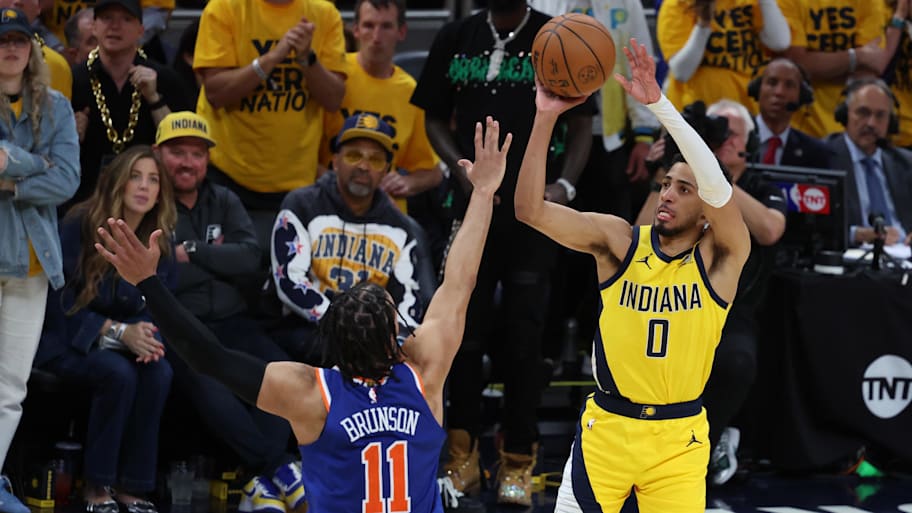

 STARKVILLE — Chris Jans focused on two areas to improve Mississippi State basketball for the 2025-26 season: rebounding and 3-point shooting.
STARKVILLE — Chris Jans focused on two areas to improve Mississippi State basketball for the 2025-26 season: rebounding and 3-point shooting.
Six transfers, four freshmen and one commitment from an international player later, the Bulldogs believe they accomplished that.
“We needed to get bigger,” Jans said on June 5 as he enters his fourth season as MSU coach. “We needed to get better on the glass, which is hard for me to admit because most of my teams historically have been really good in the rebounding department. We felt like we had too many games where that was maybe a difference in the win-loss column, so we tried to shore that up that way.”
Mississippi State finished 21-13 and made its third consecutive NCAA tournament but is still seeking its first NCAA tournament win since 2008.
It lost starting power forward Cameron Matthews to graduation and starting center Michael Nwoko transferred to Miami. Forward KeShawn Murphy, who was second on the team with 11.7 points per game and the leading rebounder at 7.4 per game, transferred to Auburn.
Mississippi State’s transfer class consists of two power forwards, Achor Achor and Brandon Walker, and one center, Quincy Ballard. The freshmen class, which is No. 12 in the country according to the 247Sports Composite rankings, contains two four-star centers in Tee Bartlett and Canton’s Jamarion Davis-Fleming.
Ballard, a Wichita State transfer, could fill that spot as a starting center. He averaged 10.0 points, 9.2 rebounds and 1.9 blocks per game last season. The Bulldogs were 130th in the country in rebounding percentage last season.

“We thought going into the year, just to be frank with you, that we had addressed it,” Jans said. “We thought we had enough guys that could shoot the ball, and for whatever reason, as a group, we didn’t end up shooting it as well as we anticipated.”
Georgetown transfer Jayden Epps shot 34.4% from 3-point range on 154 attempts. UAB transfer Ja’Borri McGhee shot 40.8% from 3-point range, but only on 71 attempts. Arizona State transfer Amier Ali was a 32.6% 3-point shooter on 92 attempts.
Sam Sklar is the Mississippi State beat reporter for the Clarion Ledger. Email him at ssklar@gannett.com and follow him on X @sklarsam_.
-

 College Sports2 weeks ago
College Sports2 weeks agoPortal Update – Basketball and Gymnastics Take Hits
-

 College Sports2 weeks ago
College Sports2 weeks agoPortal Update – Basketball and Gymnastics Take Hits
-

 Professional Sports2 weeks ago
Professional Sports2 weeks agoJon Jones answers UFC retirement speculation as fans accuse champion of 'holding the belt …
-

 Health2 weeks ago
Health2 weeks agoBYU women's basketball guard injures ACL twice
-

 NIL1 week ago
NIL1 week ago2025 NCAA Softball Tournament Bracket: Women’s College World Series bracket, schedule set
-

 Youtube2 weeks ago
Youtube2 weeks agoXavier Legette taught Marty Smith his signature celly
-

 High School Sports2 weeks ago
High School Sports2 weeks agoToday in the MHSAA
-

 College Sports2 weeks ago
College Sports2 weeks agoNCDC Commitment Profiles: Cyclones’ Martins Moving On to Saint Anselm College • USPHL
-

 College Sports2 weeks ago
College Sports2 weeks agoIU basketball recruiting
-

 Motorsports2 weeks ago
Motorsports2 weeks agoWhy IHOP Rode With Dale Earnhardt Jr. In Amazon NASCAR Debut





































